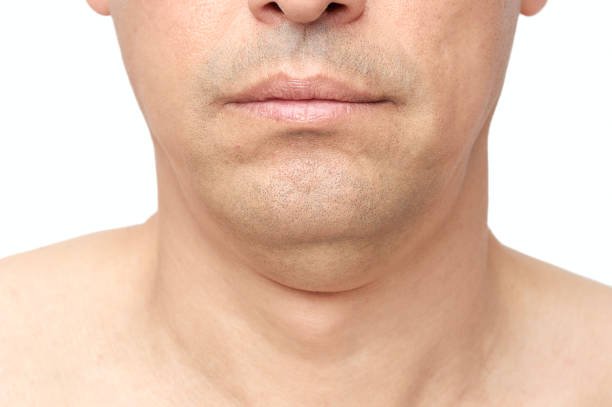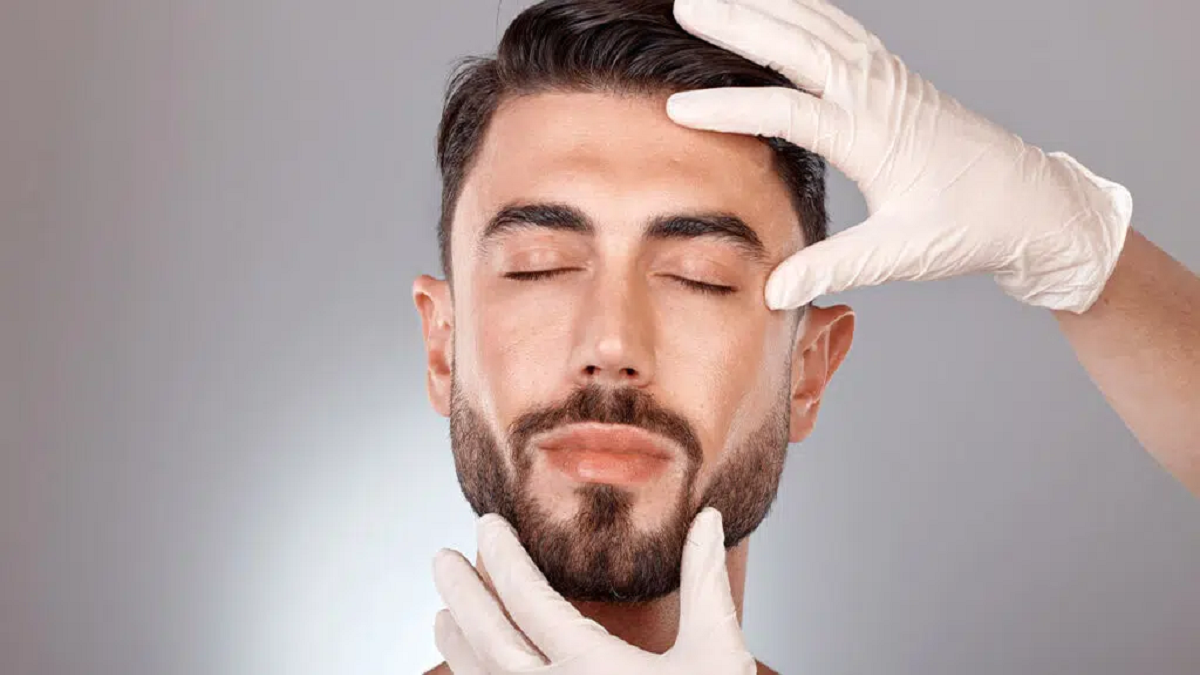Regular aerobic activity and a well-balanced diet may help you to find the answer to how to lose face fat. Also, several face workouts might aid in toning and strengthening the facial muscles. Reducing the amount of fat on your cheeks, neck, and chin is something that many people want.
Few studies back up the claims made by the many slimming gadgets and straps on the market that they may accelerate the elimination of face fat. Usually, losing body fat requires long-term dietary and lifestyle adjustments. Here are some efficient tips to lose facial fat and trim down your face, as well as some long-term fat-gain prevention techniques.
Tips To Lose Face Fat

1. Have Cardio Exercise
Losing weight usually is an answer to how to lose face fat. Cardio exercise, often known as aerobic exercise, may be very helpful for losing weight. One study of 24 overweight women found that after completing a 12-week aerobic exercise program, the women’s lean body mass increased while their waist circumference and fat mass significantly decreased.
Cardio workouts may be done at a low, moderate, or high intensity. Research indicates that while high-intensity workouts can reduce body fat more quickly, low-intensity workouts have a comparable impact on overall fat loss. In general, losing weight is likely to make the face seem thinner.
2. Include Facial Exercises
Exercises for the face may be some tips to lose facial fat, combat aging, and enhance facial look. Including facial workouts in one’s daily regimen may help tone facial muscles and provide the appearance of a smaller face.
Puffing out the cheeks and moving air from side to side, pursing the lips on opposite sides, and—above all—maintaining a grin and avoiding furious faces are some of the most popular exercises. Face workouts may assist in improving facial muscular tone, but the scientific data is still inconclusive.
Doing facial muscle exercises twice a day for eight weeks enhanced face regeneration and muscle thickness. The efficiency of facial workouts for fat reduction in a particular location, such as the face, has not been well studied, and more study is required to assess the potential effects of these exercises on human facial fat.
3. Limit Alcohol Intake
Drinking too much alcohol may dehydrate you and make your body retain water. In some cases, this may lead to water retention in the face, which may make the face seem bloated and puffy. Additionally, drinking alcohol might cause weight gain. It contains empty, nutritionally worthless calories. Consuming empty calories increases caloric intake each day, which promotes weight gain.
Alcohol may also decrease hormones that promote feelings of fullness, according to studies. This might lead to a person being urged to eat more calories. People who struggle to know how to lose face fat may want to think about cutting down on their alcohol intake.
4. Drink Plenty Of Water
Drinking water is crucial for general health and plays a significant role in weight control, particularly in attempts to minimize face fat. Staying well-hydrated helps regulate internal processes, improves digestion, and may assist with hunger management. Drinking water before meals might lead to lower calorie consumption, since it generates a sensation of fullness that helps avoid overeating.
One study indicated that people who drank water before meals consumed considerably fewer calories. In addition, several studies have revealed that water may temporarily improve metabolism, helping the body to burn calories more effectively.
This minor rise in metabolic rate might boost the efficiency of weight reduction treatments over time. Incorporating extra water into your daily routine is a simple, natural strategy to boost fat reduction and maintain a healthier look.
5. Get Adequate Sleep
There are many health advantages to getting the recommended amount of sleep. On the other hand, weight growth might result from inadequate sleep. For instance, hormone levels that support emotions of hunger and fullness are impacted by sleep deprivation.
In particular, it seems that sleep deprivation lowers levels of the hormone leptin, which signals the body when it is full, and raises levels of the hormone ghrelin, which increases hunger. People who are sleep deprived may therefore eat more and choose meals that are higher in calories. By preventing weight growth, getting enough sleep may help reduce the amount of fat that is deposited in the face.
6. Control Intake Of Refined Carbs
Refined carbohydrates, such as those in pasta, cookies, and crackers, are often the cause of weight gain and increased fat accumulation. In addition to being high in calories and sugar, these carbohydrates have undergone extensive processing that has removed fiber and other healthy ingredients, leaving them with little to no nutritional value.
Refined carbohydrates are rapidly digested due to their low fiber content, which causes blood sugar increases and hunger. Consuming more refined carbohydrates was linked to an increased risk of obesity and abdominal fat.
Although the effects of refined carbohydrates on facial fat have not been explicitly studied, consuming more whole grains instead of meals rich in refined carbohydrates may help you lose weight overall, which will reduce the amount of fat on your face.
Read More: 9 Effects of Coconut Oil on Your Health
7. Lower Sodium Intake
Bloating, which may lead to puffiness and face puffiness, is a clear indication that your body has too much salt. This is due to the fact that salt makes the body retain water, which results in edema. Eating more meals rich in sodium might make you retain more water, particularly if you’re sensitive to the effects of salt.
Cutting back on convenience meals, snacks, and processed meats may be a simple and efficient tip to lose facial fat by lowering your sodium consumption since processed foods make up over 75% of the salt in the typical diet. Thus, to make your face seem thinner, think about cutting down on salt.
8. Have More Fiber
Increasing your intake of fiber is one of the most popular suggestions for decreasing buccal and face fat. Plant meals include a substance called fiber that passes slowly through your digestive system, reducing hunger and prolonging feelings of fullness.
Research including 345 overweight and obese individuals found that consuming a lot of fiber was linked to better adherence to a low-calorie diet and more weight reduction. Eating more soluble fiber—a kind of fiber that gels when combined with water—can lower body weight and waist circumference without limiting caloric consumption.
Many foods, such as fruits, vegetables, whole grains, legumes, nuts, and seeds, naturally contain fiber. You should try to get between 25 and 38 grams of fiber from these foods each day.
Wrapping Up
Maintaining a healthy weight via general fat reduction may be the answer to how to lose face fat. While many individuals seek to target particular regions for fat reduction—such as the cheeks, chin, or jawline—the fact is that spot reduction is a fiction.
When the body is in a calorie deficit—meaning it burns more calories than it consumes—it starts to break down fat cells for energy. As a consequence, lowering general body fat via consistent lifestyle practices is the most efficient strategy to slim down the face naturally.
A mix of a balanced, nutrient-rich diet, frequent physical exercise, and enough water is crucial. Eating entire meals like veggies, lean meats, whole grains, and healthy fats may enhance metabolism and help control weight. At the same time, avoiding processed meals, sugar, and salt may minimize bloating and puffiness in the face.
Cardiovascular activity, such as walking, jogging, swimming, or cycling, is very useful for burning calories and boosting fat metabolism. Strength training may also help long-term fat reduction by increasing lean muscle, which raises resting metabolic rate.
Additionally, lifestyle choices such as getting adequate sleep, controlling stress, and avoiding excessive alcohol or salt consumption may further encourage a healthier, slimmer look. These variables may alter hormone levels, water retention, and general well-being, all of which affect face fat.
Rather than relying on short fixes or facial-targeted regimens, adopting sustained, full-body health practices is the most dependable approach to obtaining a naturally smaller face.
FAQ
Q: Does running reduce fat on the face?
A: Running won’t specifically target facial fat, but it can help with overall weight loss and fat reduction. Although you can’t control where your body sheds fat, running may help burn calories and decrease body fat, which can result in a smaller face as part of total weight reduction.
Q: Does reducing sugar lead to less fat on the face?
A: It’s true that decreasing sugar might make your face seem thinner. Although there isn’t a particular method for losing fat in the face, a balanced diet and regular exercise, which include cutting down on sweets, will help reduce body fat generally, which in turn helps reduce facial fat.
Q: Is it difficult to remove facial fat?
A: A slimmer face can result from lowering total body fat through diet and exercise, even though you can’t specifically target fat loss in one area, like the face. It’s a typical location where fat loss becomes apparent when total body fat drops.











